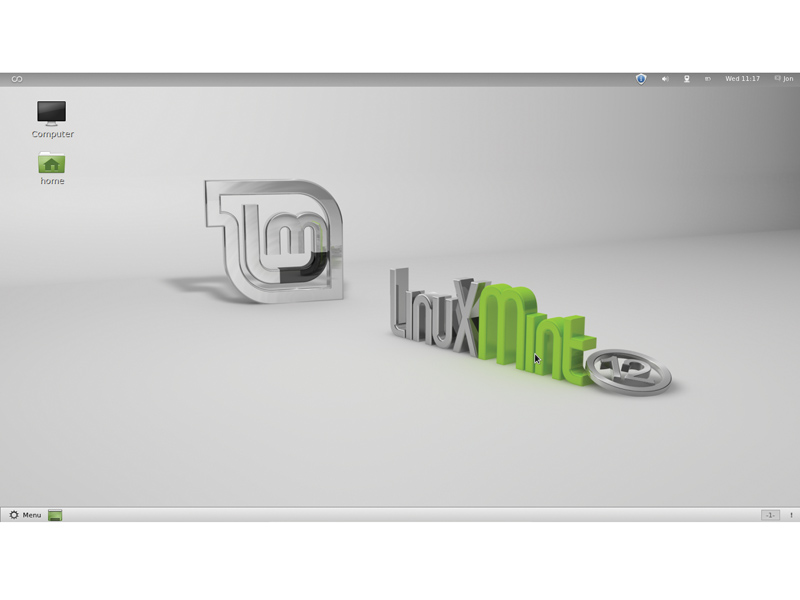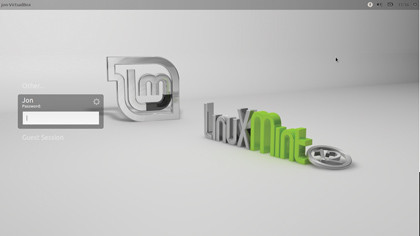The beginner's guide to Linux Mint
Dive into Linux Mint's brand new desktop interface

Linux Mint has just released its latversion, Mint 12, and has now become the last of the big three distributions to switch to a radically new desktop interface.
We found that it's an impressive compromise between Gnome Shell's new fangled way of doing things and the more traditional desktops of the past.
If you're intrigued by this and want to investigate for yourself, get a copy of Linux Mint 12, this guide, and see what you can do with the new Mint.
We'll begin by taking a quick tour of the default interface, and then move on to cover how you can customise it. We'll also take a look at Mint's package manager so that you know how to add and remove applications.
Choosing your desktop

Before we even begin to examine the new desktop, however, let's start by taking a look at Mint's new login screen. This screen is quite different to past Mint releases, since, along with Ubuntu, they've switched away from Gnome's default login manager to the more customisable LightDM.
At the top-right of the screen, you can find some basic controls, including some (limited) accessibility options, volume control and the option to power-off the computer. The centre-left of the screen is where you log in.
By default, one user or another will be highlighted by a grey box, with a password entry field at the ready. Other users and guest sessions can be selected by clicking on their name above or below this.
Get daily insight, inspiration and deals in your inbox
Sign up for breaking news, reviews, opinion, top tech deals, and more.
The most important thing to know about this new login screen is that you can use it to select which desktop you want to use. So, if you decide that you don't like Mint's new desktop, you can use it to switch to Mate, its port of Gnome 2, which faithfully recreates past Mint desktops.
If you want to install something entirely different, such as KDE or Xfce, you'll also be able to select those from the login screen. To do this, select your username from the list and then, before typing your password and pressing enter, click the small cog in the top right of the box.
From this menu, you can select between all available desktops. Whichever desktop you choose will remain the default until you change it again.
Meet the Shell
Now that you're familiar with the login screen, let's take a look at Mint 12's default interface. Make sure you've selected Gnome as the desktop to use and then enter your password and log in.
The first thing to note is that, unlike past Mint releases, there are two panels on the desktop – one at the top and another at the bottom. Looking at the top panel from left to right, there's:
The infinity icon, which launches the Overview mode – more on this later.
The system tray, where applications can store alerts or quick access controls.
The indicator area, where you can control the volume and select which network you want to connect to.
The clock applet, which expands to a calender when clicked.
The status menu, which lets you log out, shutdown, control your availability in chat and access system settings.
All of this, with the exception of the infinity icon, should be fairly self-explanatory.
Clicking on any of the icons to the right-hand side brings up further information and options for you to change. Clicking on the speaker icon, for instance, will allow you to adjust the volume of your computer's speakers and access the sound settings.
Of these icons, the Status menu provides the most comprehensive set of options. The only one of these that requires explanation is Notifications.
When you insert a DVD, or someone contacts you via instant messenger, Gnome Shell will usually alert you by raising a black rectangle at the bottom of the screen. These notifications are useful since they allow you to take further actions in response to the alert, but if you want to focus without any distractions they can also be annoying.
The designers of Gnome Shell recognised this, so put the Notifications option in the Status menu. This way, you can turn off all notifications when you don't want to be disturbed. Just remember to turn them on again later.
The bottom panel
Almost everything in the top panel is standard Gnome Shell; the bottom panel is all Linux Mint's doing. On the left-hand side of the bottom panel is a menu for launching applications, the spiritual successor to the Mint menu.
This menu is split in to three main columns. The left most one shows your favourite applications, which can be set in the Overview mode; the middle one shows categories of applications to make browsing easier; and the right most one shows the applications within those categories.
If you prefer a keyboard to a mouse, you can use the Search bar at the top to quickly find the application you're looking for by typing its name.
Next to the menu is the show desktop icon, which will minimise all your open windows. Next to this is the window list. If you have no windows open, it will look like a big, empty space; otherwise, it will be filled with buttons representing your open and minimised windows – it works just like the window list in Gnome 2 did.
At the other end of this panel are the desktop switcher and Mint's new notification toggle. By default, Gnome Shell creates only a single desktop, but automatically adds a second as soon as you open any applications and so on; if you remove all applications from a desktop, Gnome Shell will then remove it. Mint's switcher will immediately mirror Gnome Shell's changes to the number of desktops.
The notification icon is a clever addition. By default, after you dismiss Gnome Shell notifications without doing anything, they disappear in to a small black bar at the bottom of the screen. You would ordinarilly raise this by moving your mouse to the bottom right-hand corner, but with the new taskbar, you would often accidentally cause it to appear and interfere with what you were trying to do.
Instead, Mint has made it so that you need to click this exclamation mark to get access to the notifications.